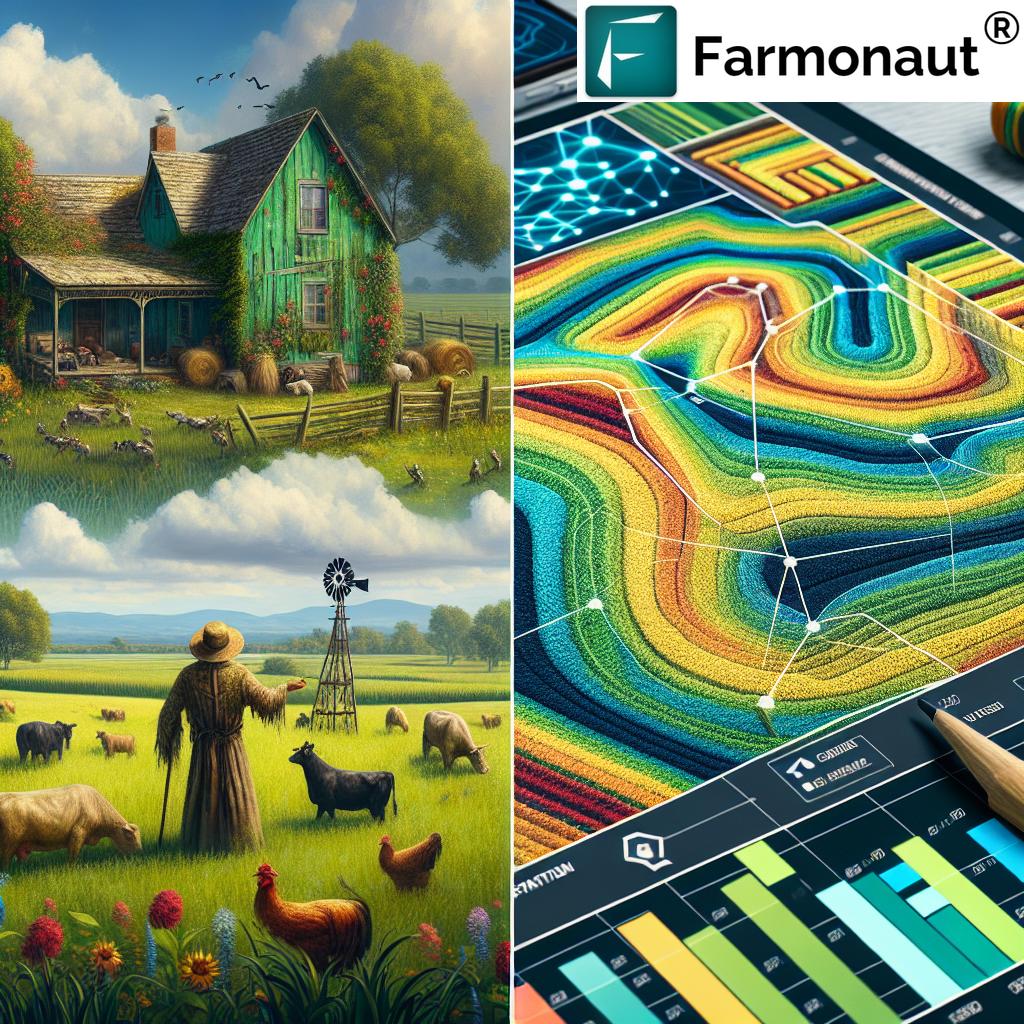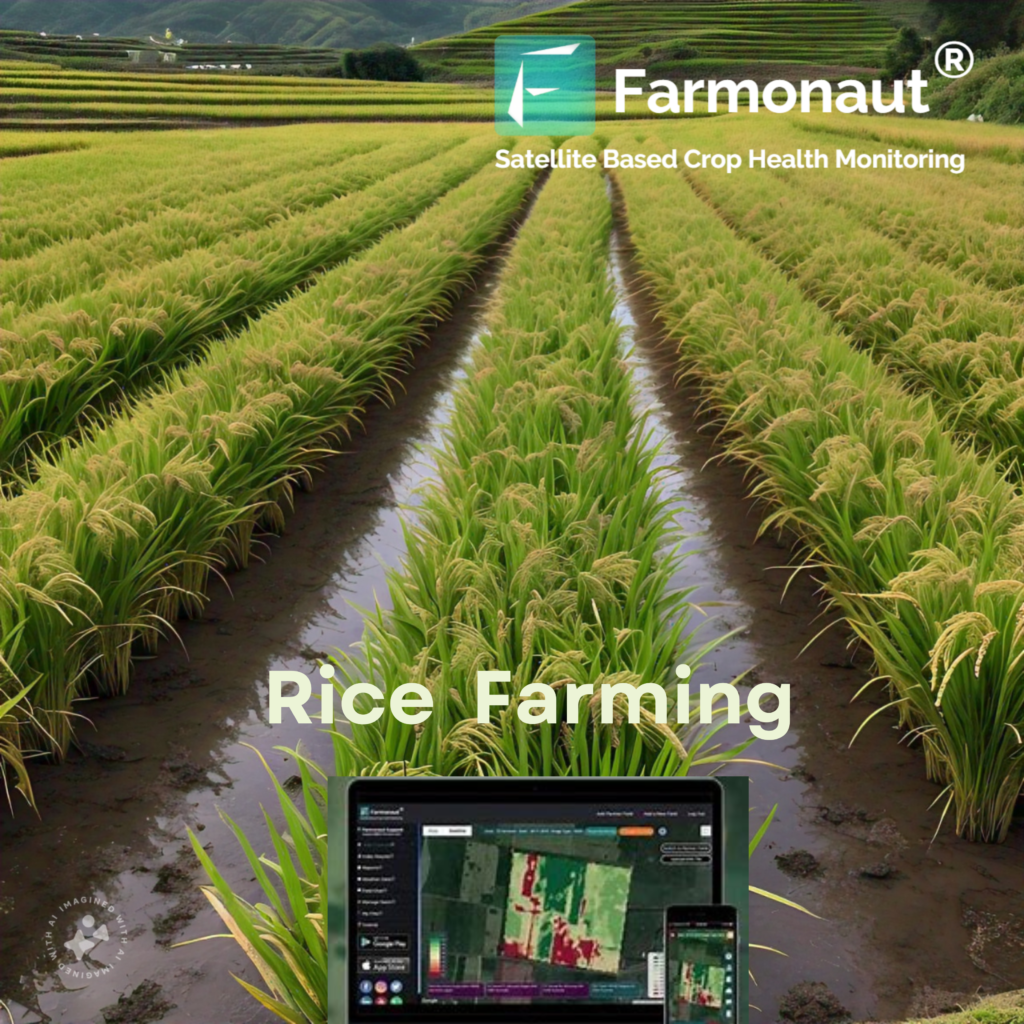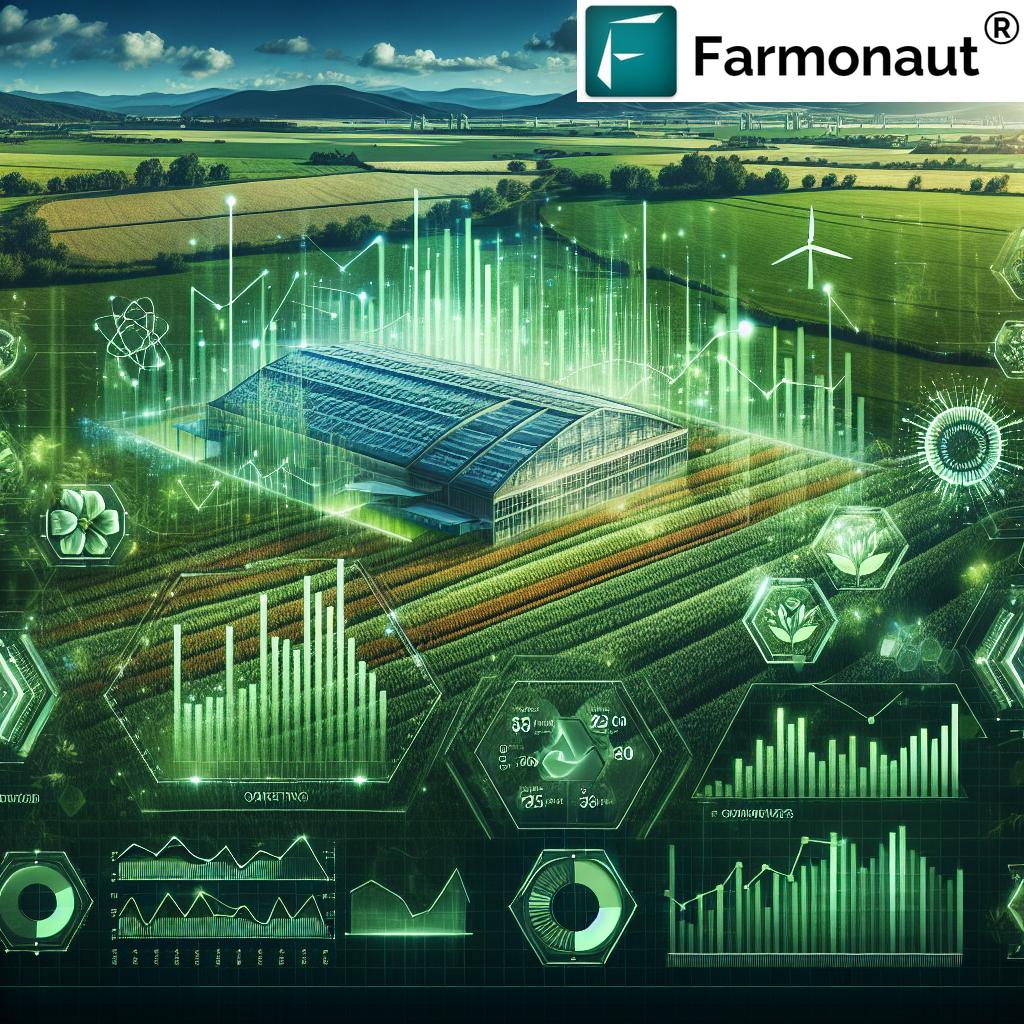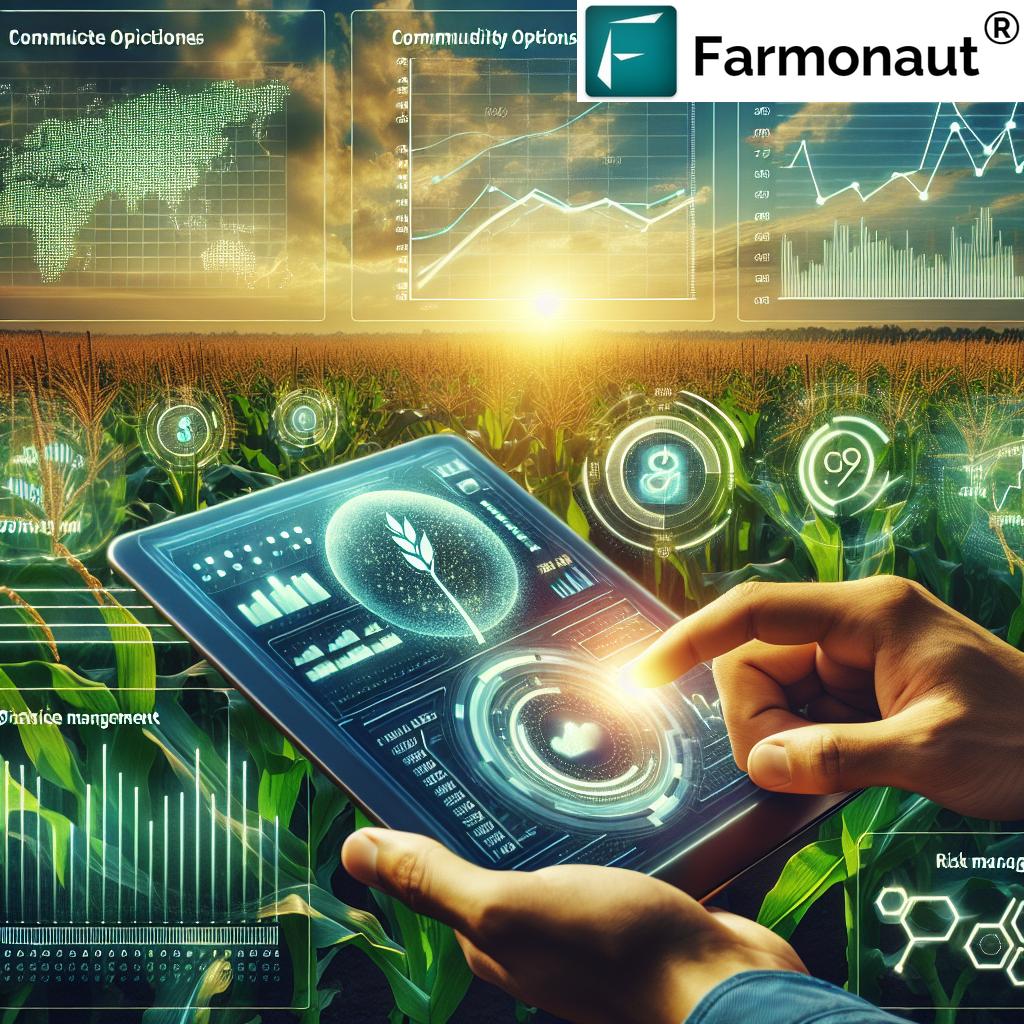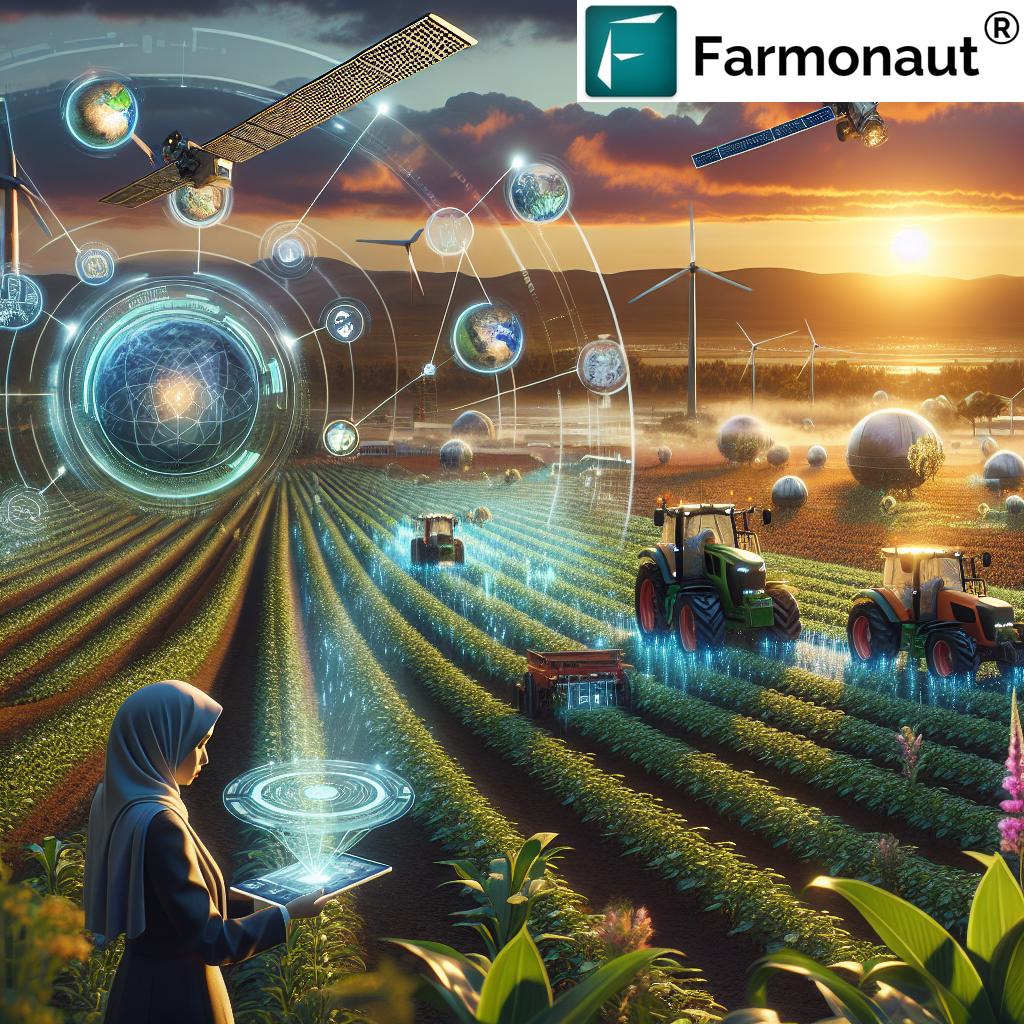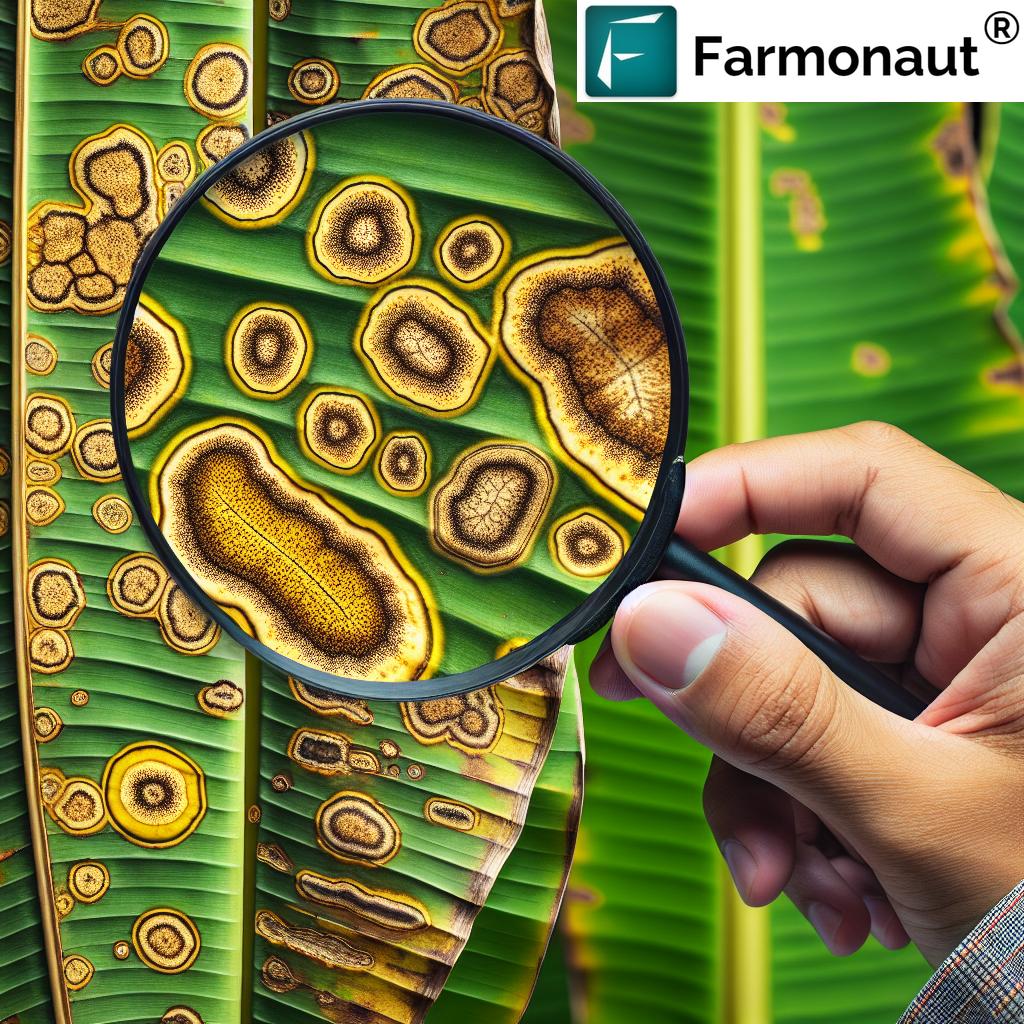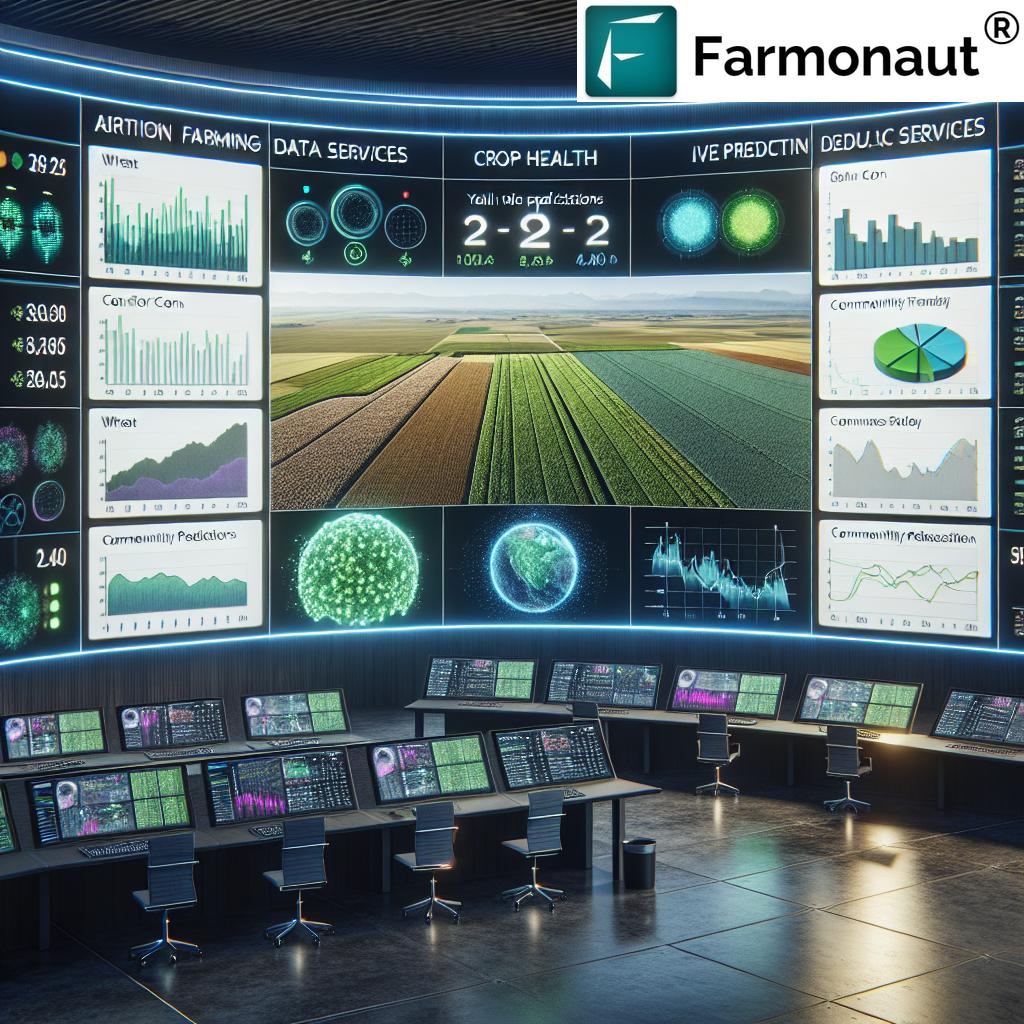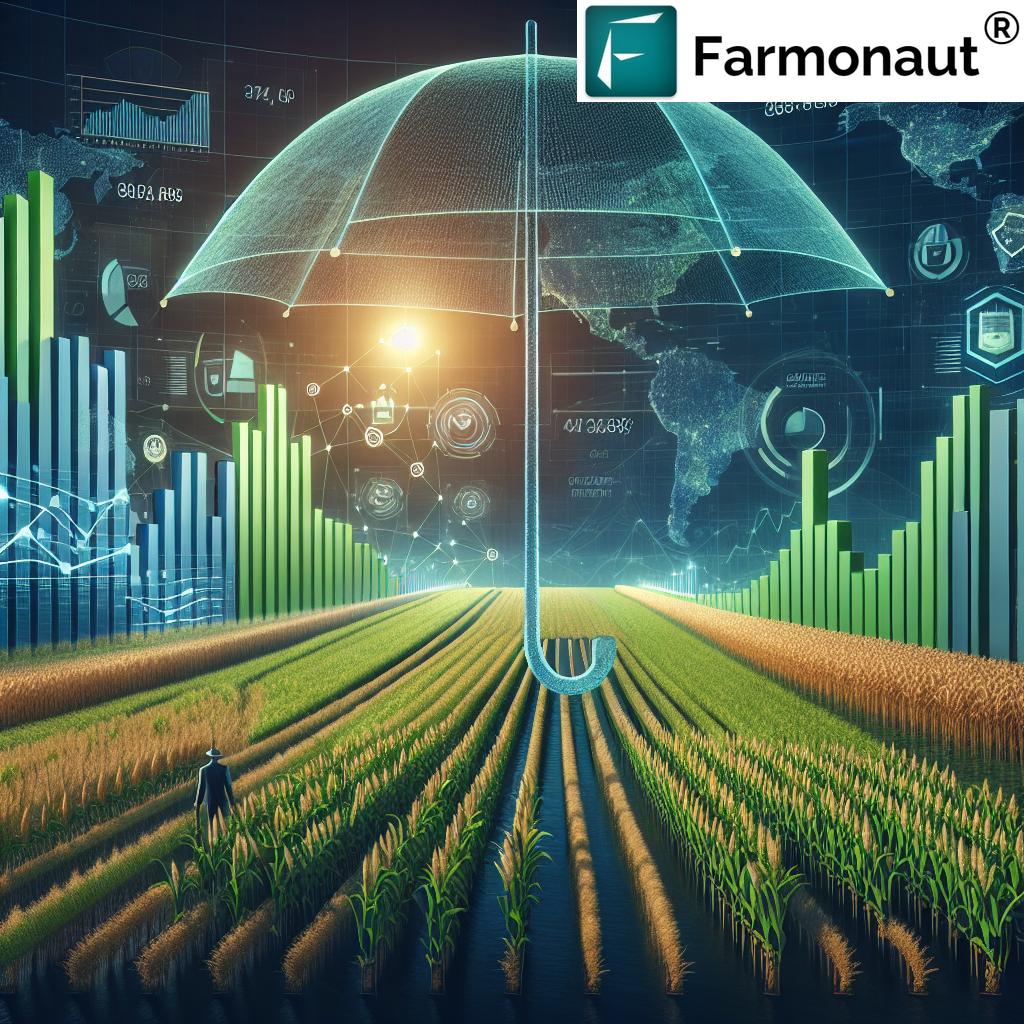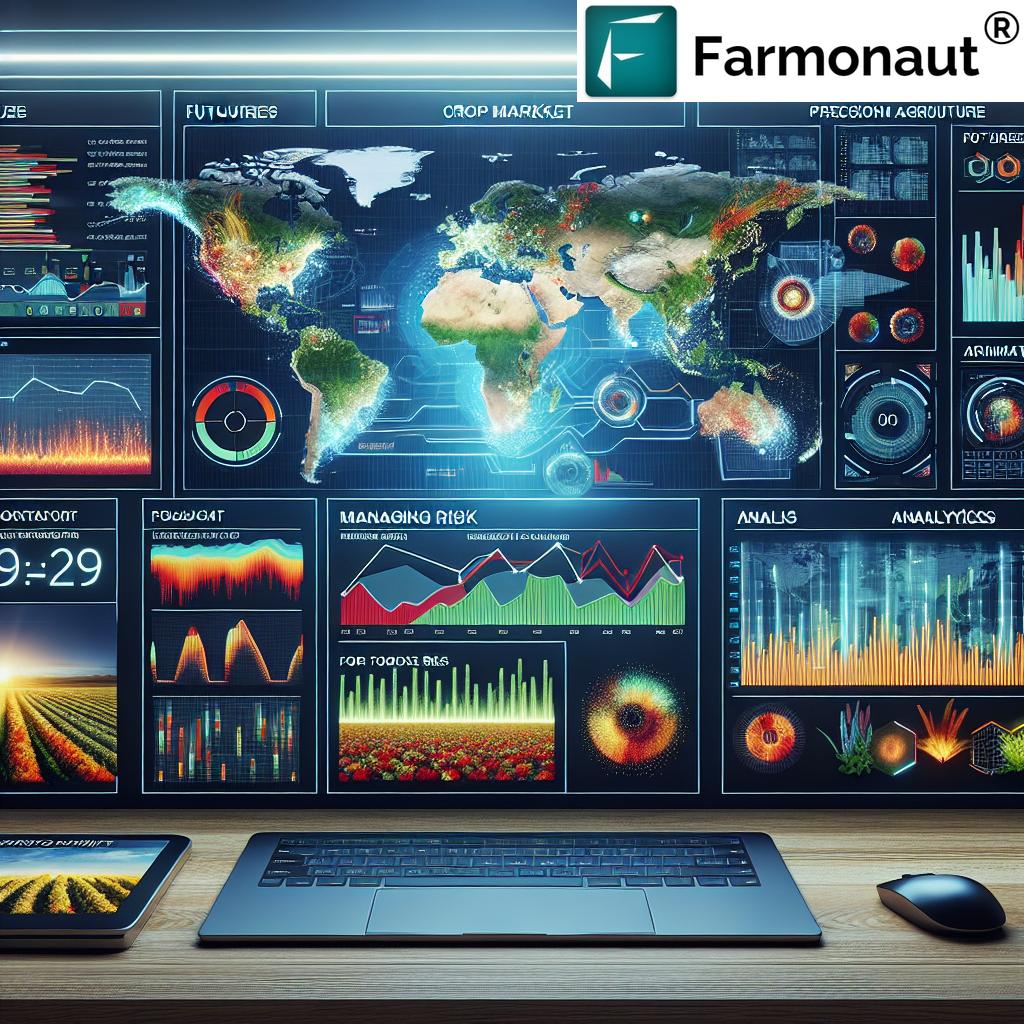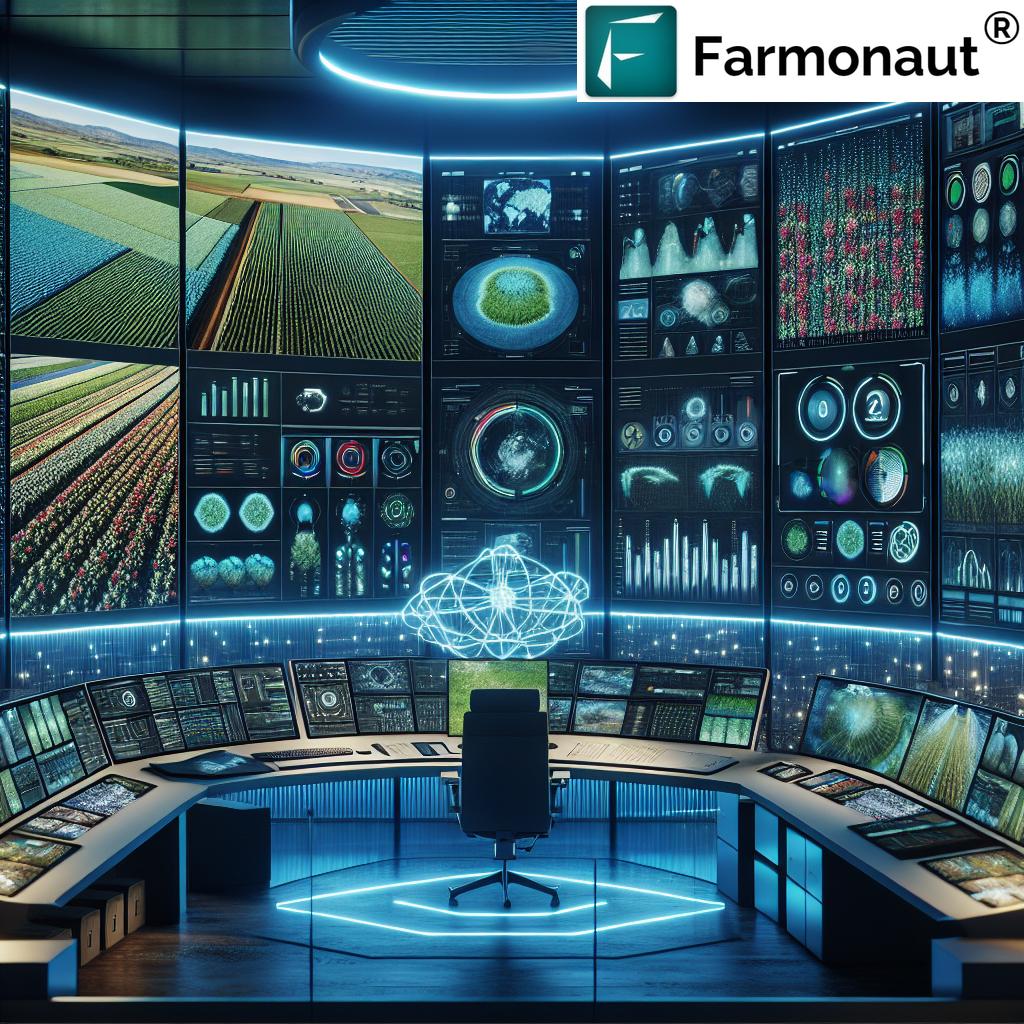Revolutionizing Agriculture: How Digital Solutions and Precision Farming Are Transforming Crop Management
“Precision farming technologies have increased crop yields by up to 30% while reducing water usage by 20-50%.”
In the ever-evolving landscape of modern agriculture, we find ourselves at the forefront of a digital revolution that is reshaping the way we grow, manage, and distribute food. As we delve into the world of digital agriculture solutions and precision farming technologies, we’re witnessing a transformation that promises to address global food security challenges while promoting sustainable agricultural practices.
At Farmonaut, we’re proud to be part of this agricultural revolution, offering cutting-edge solutions that empower farmers with real-time data and actionable insights. Our mission is to make precision agriculture accessible and affordable to farmers worldwide, integrating innovative technology into traditional farming practices.
The Digital Agriculture Revolution
Digital agriculture solutions are revolutionizing farming practices across the globe. These technologies are not just changing the way we farm; they’re transforming entire agricultural processes, from seed selection to harvest management and beyond. Let’s explore some of the key innovations driving this change:
- Satellite-based crop monitoring
- Drone technology for precision agriculture
- Internet of Things (IoT) sensors
- Artificial Intelligence and Machine Learning in farming
- Big data analytics for agricultural insights
Each of these technologies plays a vital role in the digital transformation of farming, offering unprecedented levels of precision, efficiency, and sustainability.
Satellite-Based Crop Monitoring: A Game-Changer in Precision Agriculture
One of the most significant advancements in digital agriculture is the use of satellite imagery for crop monitoring. At Farmonaut, we leverage multispectral satellite images to provide farmers with real-time insights into their crop health, soil moisture levels, and other critical metrics.
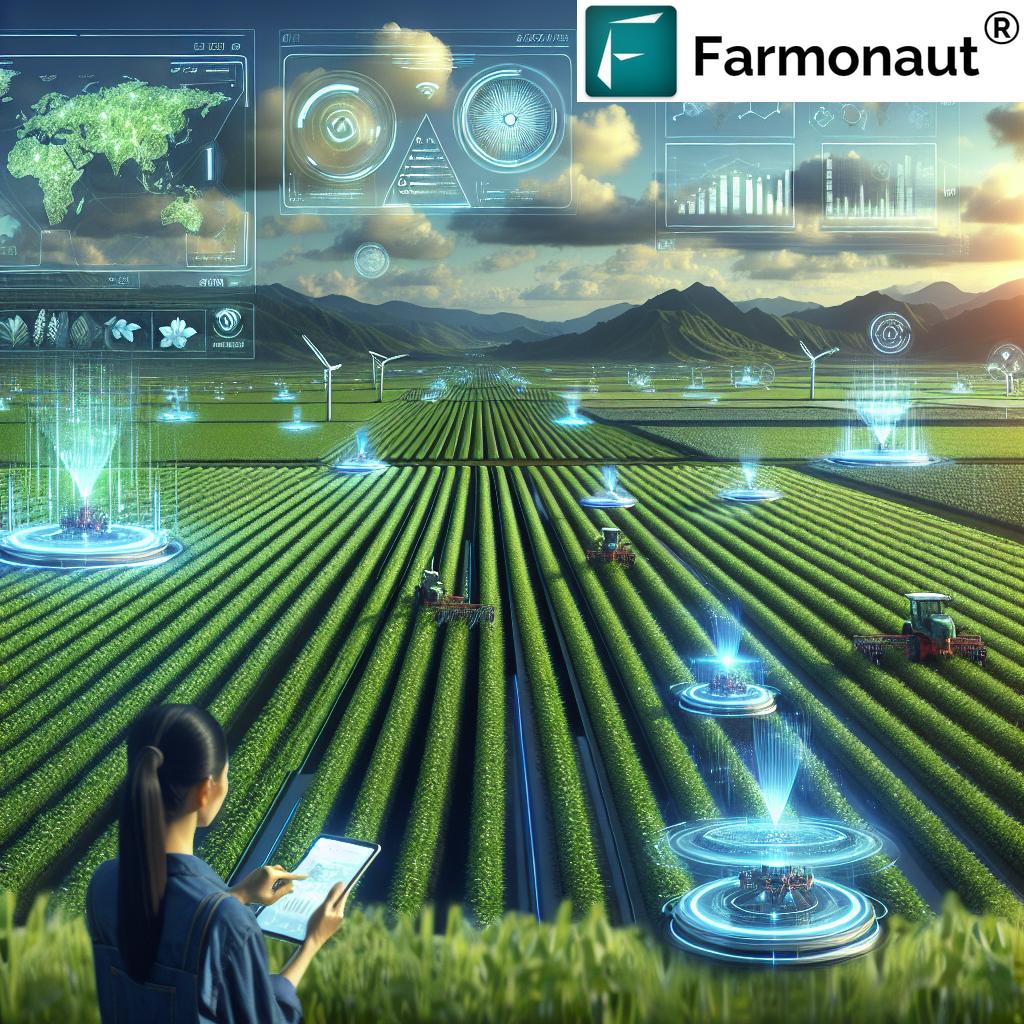
This technology allows farmers to:
- Monitor crop health across vast areas
- Detect early signs of pest infestations or diseases
- Optimize irrigation and fertilizer use
- Make data-driven decisions for improved crop yields
By providing this level of detail and insight, satellite-based crop monitoring is revolutionizing the way farmers manage their fields, leading to more efficient use of resources and higher productivity.
Drone Technology: Precision Farming from Above
While satellites offer a broad view, drones provide farmers with high-resolution, on-demand imagery of their fields. Crop monitoring with drones has become an essential tool in the precision farmer’s arsenal. These unmanned aerial vehicles can:
- Capture detailed images of crop conditions
- Identify areas of stress or disease with pinpoint accuracy
- Assist in targeted application of pesticides and fertilizers
- Help in crop inventory and yield estimation
The combination of satellite and drone technology offers farmers an unprecedented level of insight into their fields, enabling them to make more informed decisions and optimize their farming practices.
IoT in Agriculture: Connecting the Farm
The Internet of Things (IoT) is bringing smart farming techniques to life. By connecting various sensors and devices across the farm, IoT creates a network of data points that provide real-time information on everything from soil moisture to equipment performance.
Key applications of IoT in agriculture include:
- Automated irrigation systems
- Livestock monitoring and management
- Smart greenhouses
- Equipment tracking and maintenance
These connected devices are not only improving efficiency but also contributing to more sustainable farming practices by optimizing resource use.
AI and Machine Learning: The Brain of Digital Agriculture
Artificial Intelligence (AI) and Machine Learning (ML) are at the heart of many digital agriculture solutions. These technologies analyze vast amounts of data to provide insights and predictions that would be impossible for humans to derive on their own.
At Farmonaut, our Jeevn AI Advisory System is a prime example of how AI can revolutionize farm management. This system:
- Analyzes satellite data and other inputs
- Generates customized advice for farmers
- Provides real-time insights and weather forecasts
- Offers expert crop management strategies
By leveraging AI, farmers can make more informed decisions, leading to improved productivity and efficiency across their operations.
Big Data in Agriculture: Turning Information into Action
The agricultural sector is generating more data than ever before. From weather patterns to market prices, soil conditions to crop yields, the amount of information available to farmers is staggering. Big data in agriculture is all about harnessing this information to drive better decision-making.
Agricultural data analytics can:
- Predict crop yields with greater accuracy
- Optimize planting and harvesting schedules
- Improve supply chain efficiency
- Assist in risk management and financial planning
“Agricultural data analytics can improve farm profitability by 15% through optimized resource allocation and decision-making.”
By leveraging big data, farmers and agribusinesses can make more informed decisions, leading to increased productivity and profitability.
Farm Management Software: The Digital Command Center
Integrating all these technologies and data sources are farm management software platforms. These digital solutions serve as a central hub for farmers to manage their operations, analyze data, and make informed decisions.
Key features of modern farm management software include:
- Crop planning and monitoring
- Resource management (water, fertilizer, pesticides)
- Financial tracking and reporting
- Integration with IoT devices and sensors
- Weather forecasting and alerts
At Farmonaut, our platform offers these features and more, providing farmers with a comprehensive tool for managing their farms in the digital age.
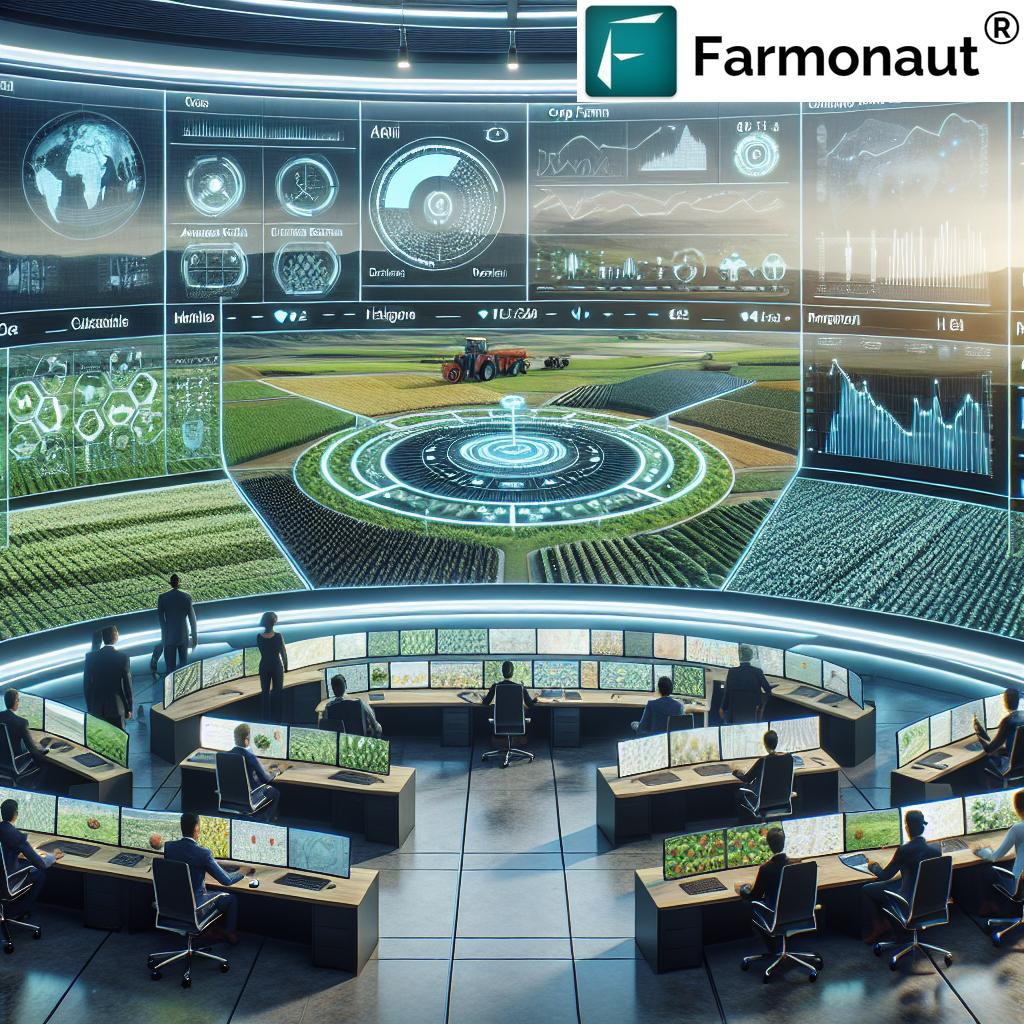
The Impact of Digital Agriculture on Sustainability
One of the most significant benefits of digital agriculture solutions is their potential to promote sustainable farming practices. By optimizing resource use and reducing waste, these technologies are helping to address some of the most pressing environmental challenges facing agriculture today.
Key sustainability benefits include:
- Reduced water usage through precision irrigation
- Decreased chemical use with targeted application
- Lower carbon emissions from optimized equipment use
- Improved soil health through data-driven management
At Farmonaut, we’re committed to promoting sustainable agriculture. Our carbon footprinting feature helps agribusinesses monitor and reduce their environmental impact, providing real-time data on emissions and enabling steps towards greater sustainability.
Digital Transformation in the Agricultural Supply Chain
The impact of digital agriculture extends beyond the farm gate. Digital transformation is reshaping the entire agricultural supply chain, from input suppliers to consumers. Key areas of transformation include:
- Blockchain-based traceability
- Smart logistics and transportation
- Digital marketplaces for agricultural products
- Precision food processing and packaging
These innovations are creating a more transparent, efficient, and responsive agricultural sector, benefiting all stakeholders in the value chain.
The Role of Digital Agriculture in Addressing Global Food Security
As the global population continues to grow, ensuring food security becomes an increasingly critical challenge. Digital agriculture solutions play a vital role in addressing this challenge by:
- Increasing crop yields through optimized farming practices
- Reducing post-harvest losses with improved storage and logistics
- Enabling more efficient use of limited agricultural land
- Facilitating better distribution of food resources
By leveraging these technologies, we can work towards a future where sustainable, efficient agriculture meets the nutritional needs of a growing global population.
Challenges and Opportunities in Digital Agriculture Adoption
While the benefits of digital agriculture are clear, there are still challenges to widespread adoption. These include:
- Initial costs of technology implementation
- Need for digital literacy and training among farmers
- Data privacy and security concerns
- Ensuring equitable access to technology across different farm sizes and regions
However, these challenges also present opportunities for innovation and collaboration within the agricultural sector. At Farmonaut, we’re working to address these issues by:
- Offering affordable, scalable solutions
- Providing user-friendly interfaces and comprehensive training
- Implementing robust data protection measures
- Partnering with organizations to expand access to digital agriculture tools
The Future of Digital Agriculture
As we look to the future, the potential for digital agriculture continues to expand. Emerging technologies and trends to watch include:
- Advanced AI and machine learning algorithms for predictive agriculture
- Integration of robotics and automation in farming processes
- Enhanced data analytics for personalized crop management
- Development of climate-smart agriculture solutions
These innovations promise to further revolutionize farming practices, driving increased productivity, sustainability, and resilience in the face of global challenges.
Digital Agriculture Technologies and Their Impact
| Technology | Description | Benefits | Adoption Rate (%) |
|---|---|---|---|
| Satellite Imagery | Uses multispectral satellite images for large-scale crop monitoring | Broad coverage, frequent updates, cost-effective | 45 |
| Drone Monitoring | Employs UAVs for high-resolution field imaging | Precise data, on-demand imagery, targeted applications | 30 |
| IoT Sensors | Network of connected devices collecting real-time field data | Continuous monitoring, automated responses, resource optimization | 25 |
| AI-driven Analytics | Advanced algorithms analyzing agricultural data for insights | Predictive capabilities, personalized recommendations, improved decision-making | 20 |
| Farm Management Software | Comprehensive platforms for farm operations and data management | Centralized control, integrated analytics, improved efficiency | 35 |
Conclusion: Embracing the Digital Agriculture Revolution
The digital transformation of agriculture is not just a trend; it’s a necessary evolution to meet the challenges of feeding a growing global population while preserving our planet’s resources. From precision farming technologies to big data analytics, these digital solutions are empowering farmers with the tools and insights they need to produce more with less.
At Farmonaut, we’re committed to driving this revolution forward, offering innovative solutions that make precision agriculture accessible to farmers of all sizes. Our platform combines satellite technology, AI, and user-friendly interfaces to provide actionable insights that can transform farming practices.
As we move forward, the continued adoption and development of digital agriculture solutions will be crucial in creating a more sustainable, efficient, and productive agricultural sector. By embracing these technologies, we can work towards a future where food security, environmental sustainability, and economic prosperity go hand in hand.
Join us in revolutionizing agriculture. Explore how Farmonaut’s digital solutions can transform your farming practices today.
For developers interested in integrating our technology into their own solutions, check out our API and API Developer Docs.
Frequently Asked Questions
Q: What is digital agriculture?
A: Digital agriculture refers to the use of advanced technologies such as satellite imagery, IoT sensors, AI, and big data analytics to optimize farming practices, improve productivity, and promote sustainability in agriculture.
Q: How does precision farming differ from traditional farming?
A: Precision farming uses technology to make site-specific, data-driven decisions about farm management, allowing for more efficient use of resources and improved crop yields compared to traditional, uniform approaches to farming.
Q: What are the main benefits of adopting digital agriculture solutions?
A: Key benefits include increased crop yields, reduced input costs, improved sustainability, better decision-making through data analytics, and enhanced farm management efficiency.
Q: How can small-scale farmers benefit from digital agriculture?
A: Small-scale farmers can benefit from affordable, accessible solutions like Farmonaut that provide valuable insights without requiring significant upfront investment in hardware or infrastructure.
Q: What role does AI play in digital agriculture?
A: AI in agriculture analyzes vast amounts of data to provide insights, predictions, and recommendations for various aspects of farming, from crop selection and pest management to harvest timing and market forecasting.





